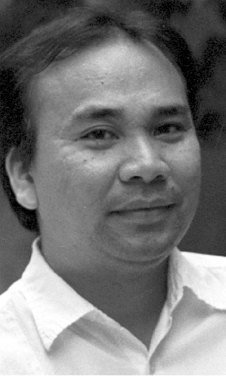Participatory: The way cultural mapping should be

Jobers Bersales
I witnessed the oath-taking of nearly a hundred cultural mappers from the different barangays and schools of Argao last Thursday.
Despite running a mild fever and plenty of coughing and sneezing, I made sure I would be present in this groundbreaking event organized under the active leadership of Mayor Stanley “Doc” Caminero and his staff together with cultural mapping expert and my good friend Ruel Rigor.
It is not often that you see the local chief executive present in events that take up the whole afternoon, plus a cultural heritage council meeting that same morning.
I did not expect Doc Stanley to continue into the afternoon but there he was with his constituents who were about to graduate from a series of field works and training sessions that Ruel had conducted.
There are a number of ways that cultural mapping, developed some three decades back, to elicit local knowledge not just about history and heritage but just about everything one needs to know about a locality’s lifeways.
There are those, like a province I know in Luzon, who paid people from Manila to go and gather data, bring these to Manila and then came back to present their findings.
It was a costly multi-million peso exercise that made locals, the culture bearers, mere passive onlookers. In the social sciences this is called data mining. It may gather information fast, with students coming into the place to ask all kinds of questions, armed with an interview form or instrument, but the people who are supposed to be the end-users of the data, do not feel like they own it.
Then there is this one that Ruel has been doing since 2004, during our heyday under Gov. Gwendolyn F. Garcia, when we organized clusters of towns and asked them to send their barangay, church and school representatives into a series of field reconnaissance activities coupled with two-day trainings and continuous monitoring to see what cultural map they could come up with.
Sure there were laggards, mostly the highly urbanized localities where even those we trained found it time-consuming.
There were also those that told us they already knew what resources they had and hence no need for cultural mapping activities. Worse were those who said they had nothing to show (only to find out after doing their cultural maps that they had so many!).
To those in the urban centers, Talisay City proved them wrong. Ably guided back then by Engr. Christine Homez and Ritchel Bacaltos, the city administrator, its barangays put up an unforgettable exhibit of heritage maps complete with objects that I believe eventually resulted in the creation of a museum. That was way back in 2011.
Seven years on and Ruel is now consultant of his beloved adopted home of Argao. Paul Gerschwiler, another keen observant of local culture and a pillar of preserving as well as understanding the past, is another asset of Argao.
His books on the town and his interpretation of the art carved and installed outside and inside the centuries-old church, which he presented to the cultural mappers, is as precious as he himself. And Argao is luckier for it (so also Boljoon, of which he has published two volumes other than a thick one on Argao produced by the Ramon Aboitiz Foundation Inc.).
My own contribution to this event, if the reader allows this intrusion, was to propose the setting up of heritage centers in lieu of just eco-museums in clusters of barangays. Argao has so much in terms of cultural materials: torta, hablon, tuba, tableya, even brick and tile roof-making (now long gone though).
It also has a number of natural heritage assets like the Sombrea and the vast mangroves of Taloot and the series of caves, some still unexplored and unspoiled, dotting her uplands. So why not, set up heritage centers, I proposed, where locals actively guide and inform visitors about their crafts, their resources, instead of just visitors looking at objects and artifacts and go home with selfies of them.
This was, visitors are educated and informed by the locals themselves so that the visitor experience is enriched further.
This would be a first time ever not just in Cebu but probably in the country where a cluster of village-based heritage centers, each dealing with one of the many cultural and natural assets of a town, are available to the visitor.
And Argao is a good model because the local government, led by its youthful indefatigable Doc Stanley is not just a passive signer of documents but is in the thick of its planning and actual implementation — a very important formula for success that other LGU’s should emulate if they want to succeed in the cultural tourism field. As we always said in the past cultural mapping trainings we carried out, passion for heritage is important.
And I was so happy to hear Doc Stanley also say this to the mappers during their “graduation” that day: that one has to be passionate about what one does in order to succeed.
Viva Argao! Padayon Argao!
Disclaimer: The comments uploaded on this site do not necessarily represent or reflect the views of management and owner of Cebudailynews. We reserve the right to exclude comments that we deem to be inconsistent with our editorial standards.
